How To Create A Child-Safe Fibreglass Pool Area
Dreaming of summer days by the pool with your children? The increasing popularity of fibreglass pools among homeowners, especially parents, stems from their safety, durability, and low maintenance. These pools offer a smooth surface that resists algae growth, making them not only easier to clean but also safer for little ones. However, having a pool comes with its responsibilities, and ensuring a child-safe pool area is paramount. From installing proper fencing and safety covers to teaching your kids about water safety, there are several steps to take. In this guide, we’ll walk you through the essential measures and tips to create a secure and enjoyable fibreglass pool environment for your family. Whether you're a new pool owner or looking to enhance your existing setup, these guidelines will help keep your loved ones safe while making the most of your pool. So, let's dive in and make your backyard oasis both fun and secure!
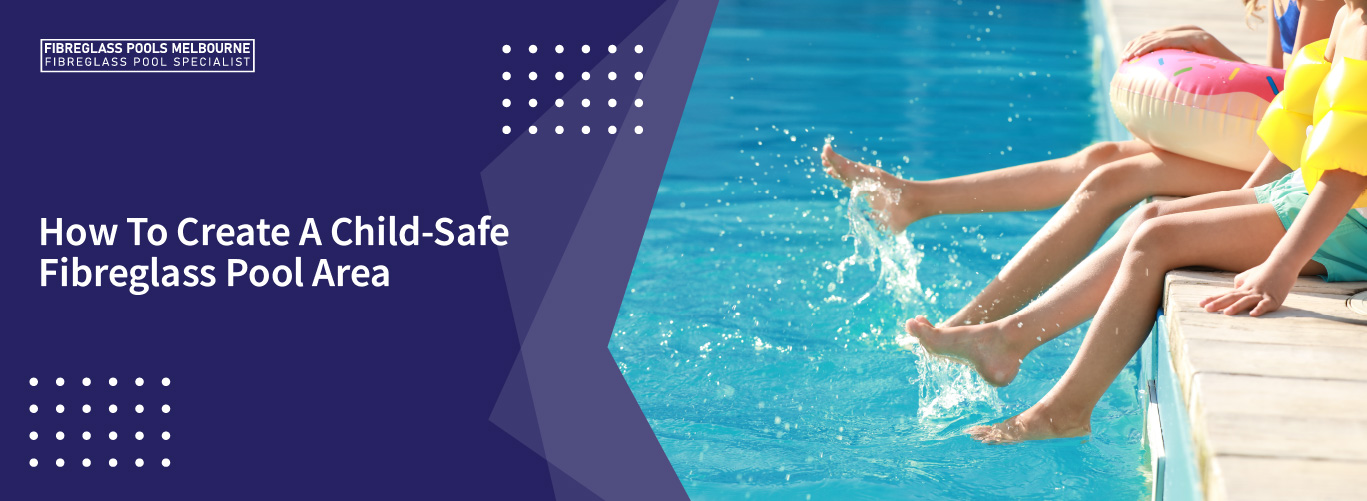
Importance of a Child-Safe Pool Area
Creating a safe environment around your pool isn’t just about peace of mind; it’s about preventing accidents and ensuring that fun doesn’t turn into tragedy. Families with children must pay special attention, as kids are naturally curious and may not fully grasp the risks involved with pools.
A child-safe pool area can prevent accidental drownings, which are unfortunately too common. According to the Royal Life Saving Society UK, drowning is one of the leading causes of accidental death in children. By taking proactive measures, you not only protect your loved ones but also instil a sense of security in your home environment.
Designing the Ideal Fibreglass Pool Area
When choosing a pool design, consider features that enhance safety. Opt for non-slip materials for the pool’s surfaces to prevent slipping and falling. A fibreglass pool with a built-in shallow area offers a safe space for children to play without venturing into deeper water.
Additionally, think about the size of your pool. A smaller pool is easier to supervise, making it ideal for families with young children. Ensure the edges and steps of the pool are smooth to avoid injuries.
Fencing and Gate Considerations
One of the most effective ways to safeguard your pool area is by installing child-proof fencing and gates. This barrier keeps children and pets from accessing the pool unsupervised. Look for fencing that is at least 1.2 metres high, with vertical bars close enough together to prevent climbing.
The gate should be self-closing and self-latching, opening outward from the pool area. This ensures that it shuts securely every time someone passes through. Regularly check the fence and gate for any damage or wear and tear to maintain their effectiveness.
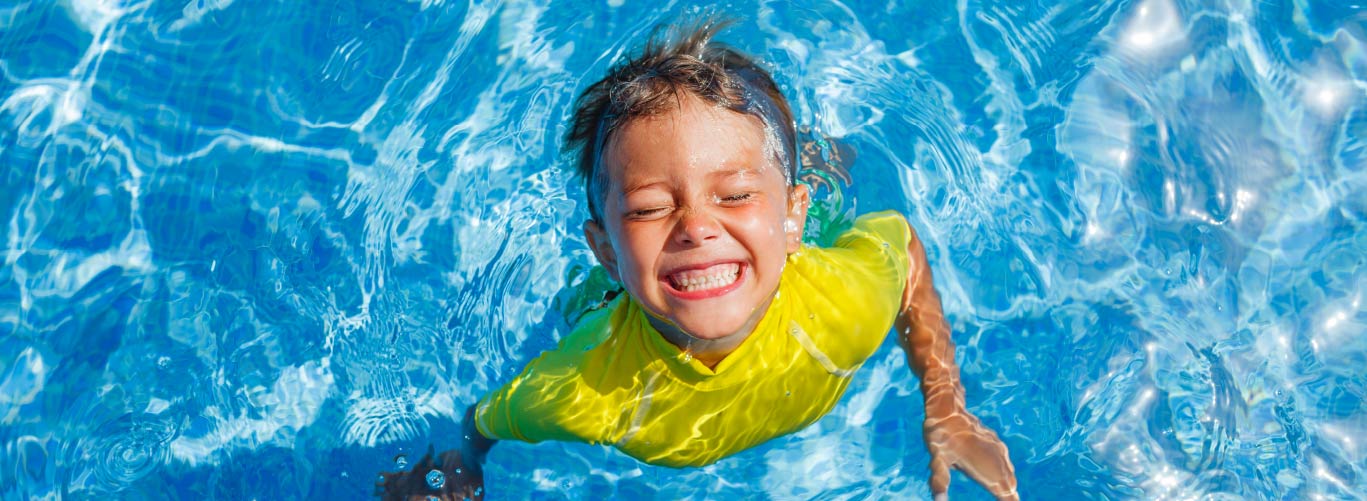
Pool Covers and Alarms
Pool covers and alarms add an extra layer of safety to your pool area, giving you peace of mind. A sturdy pool cover can prevent children and pets from accidentally falling into the water when the pool is not in use. Opt for a cover that is easy to put on and take off, ensuring it fits securely over the entire pool. It’s important to check that the cover is durable and can withstand various weather conditions, providing reliable protection all year round.
Pool alarms are another great safety feature that can make a significant difference in preventing accidents. There are various types available, including surface wave alarms that detect disturbances on the water’s surface, subsurface disturbance alarms that sense movements below the water, and wearable alarms for children that alert you if they fall into the pool. These devices provide an immediate alert if someone enters the pool area unexpectedly, allowing you to respond quickly and potentially averting a tragic accident. Additionally, integrating pool alarms with your home security system can enhance overall safety by ensuring that you are notified through multiple channels.
Landscaping for Safety and Aesthetics
Landscaping around your pool can contribute significantly to both safety and aesthetics. Choose plants that are non-toxic and steer clear of sharp or thorny foliage that could cause injuries to pool users, especially children. Soft, rounded plants like lavender, ornamental grasses, or even succulents are great choices for creating a beautiful yet safe poolside environment. Additionally, consider using plants that can withstand the pool’s microclimate, which may include higher humidity and occasional splashes of chlorinated water.
Incorporate non-slip pathways to prevent falls, ensuring pathways are wide enough for easy movement and made of materials that provide good traction even when wet. Ensure that there is adequate lighting around the pool area for evening use. Lighting not only enhances the beauty of the space but also ensures that any potential hazards, like uneven ground or pool edges, are visible. Use a combination of ambient, task, and accent lighting to create a well-lit and inviting atmosphere. For additional safety, consider installing motion sensor lights that automatically illuminate the area when someone approaches, further reducing the risk of accidents.
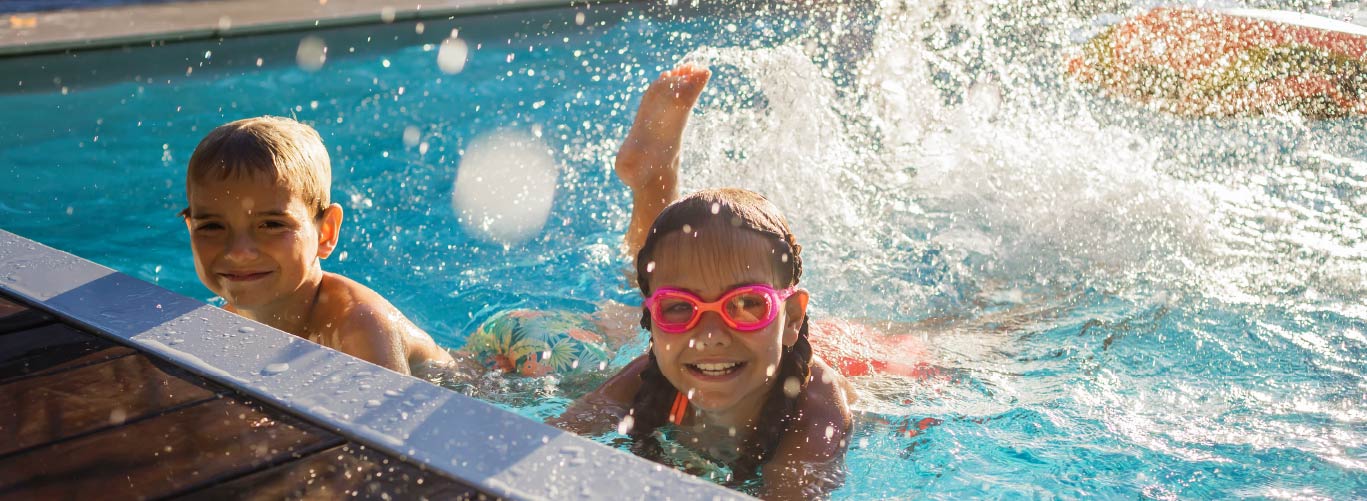
Maintenance and Regular Checks
Consistent maintenance and regular safety checks are crucial to keeping your pool area safe. Check the pool’s chemical levels frequently to ensure the water is safe for swimming. This includes monitoring pH levels, chlorine content, and alkalinity to prevent harmful bacteria and algae growth. Inspect all safety features, such as fencing, gates, covers, and alarms, to confirm they are functioning correctly. Ensuring that barriers are secure and alarms are operational can prevent accidental drownings, especially for small children and pets.
Scheduling regular professional inspections can help identify potential issues before they become serious problems. Professionals can provide a thorough check of your pool’s filtration system, plumbing, and structural integrity, which might be overlooked during routine checks. Addressing maintenance needs promptly ensures that your pool remains a safe and enjoyable space for your family. Regular cleaning, debris removal, and equipment maintenance are also vital in keeping the pool in optimal condition, allowing for a refreshing and worry-free swimming experience.
Conclusion
Creating a child-safe fibreglass pool area involves thoughtful planning and diligent maintenance. By focusing on key aspects like pool design, fencing, covers, alarms, and landscaping, you can create a secure and inviting environment for your family. Remember, safety is an ongoing commitment. Regular checks and updates will ensure that your pool remains a safe haven for years to come. Prioritise safety today, and enjoy the peace of mind that comes from knowing your loved ones can swim safely.
How To Create A Child-Safe Fibreglass Pool Area
Dreaming of summer days by the pool with your children? The increasing popularity of fibreglass pools among homeowners, especially parents, stems from their safety, durability, and low maintenance. These pools offer a smooth surface that resists algae growth, making them not only easier to clean but also safer for little ones. However, having a pool comes with its responsibilities, and ensuring a child-safe pool area is paramount. From installing proper fencing and safety covers to teaching your kids about water safety, there are several steps to take. In this guide, we’ll walk you through the essential measures and tips to create a secure and enjoyable fibreglass pool environment for your family. Whether you're a new pool owner or looking to enhance your existing setup, these guidelines will help keep your loved ones safe while making the most of your pool. So, let's dive in and make your backyard oasis both fun and secure!
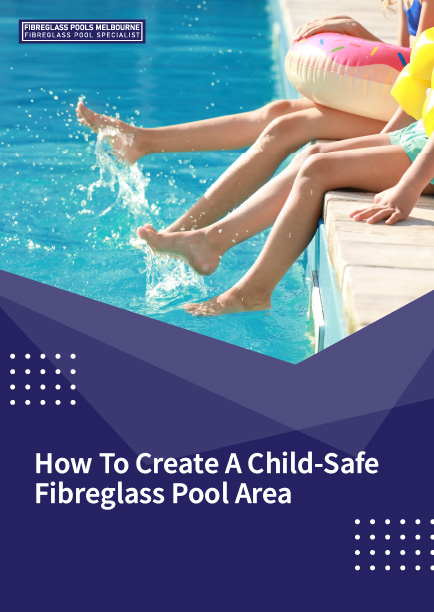
Importance of a Child-Safe Pool Area
Creating a safe environment around your pool isn’t just about peace of mind; it’s about preventing accidents and ensuring that fun doesn’t turn into tragedy. Families with children must pay special attention, as kids are naturally curious and may not fully grasp the risks involved with pools.
A child-safe pool area can prevent accidental drownings, which are unfortunately too common. According to the Royal Life Saving Society UK, drowning is one of the leading causes of accidental death in children. By taking proactive measures, you not only protect your loved ones but also instil a sense of security in your home environment.
Designing the Ideal Fibreglass Pool Area
When choosing a pool design, consider features that enhance safety. Opt for non-slip materials for the pool’s surfaces to prevent slipping and falling. A fibreglass pool with a built-in shallow area offers a safe space for children to play without venturing into deeper water.
Additionally, think about the size of your pool. A smaller pool is easier to supervise, making it ideal for families with young children. Ensure the edges and steps of the pool are smooth to avoid injuries.
Fencing and Gate Considerations
One of the most effective ways to safeguard your pool area is by installing child-proof fencing and gates. This barrier keeps children and pets from accessing the pool unsupervised. Look for fencing that is at least 1.2 metres high, with vertical bars close enough together to prevent climbing.
The gate should be self-closing and self-latching, opening outward from the pool area. This ensures that it shuts securely every time someone passes through. Regularly check the fence and gate for any damage or wear and tear to maintain their effectiveness.
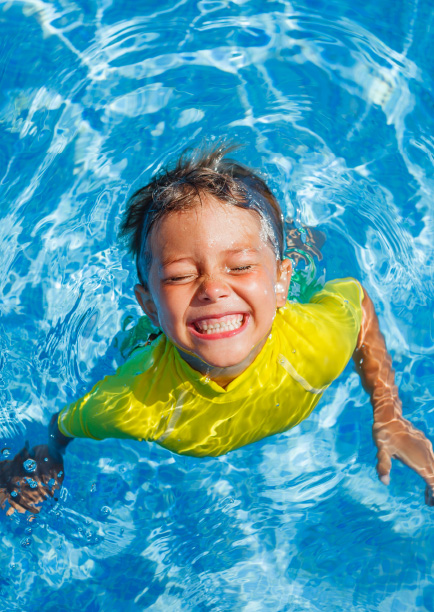
Pool Covers and Alarms
Pool covers and alarms add an extra layer of safety to your pool area, giving you peace of mind. A sturdy pool cover can prevent children and pets from accidentally falling into the water when the pool is not in use. Opt for a cover that is easy to put on and take off, ensuring it fits securely over the entire pool. It’s important to check that the cover is durable and can withstand various weather conditions, providing reliable protection all year round.
Pool alarms are another great safety feature that can make a significant difference in preventing accidents. There are various types available, including surface wave alarms that detect disturbances on the water’s surface, subsurface disturbance alarms that sense movements below the water, and wearable alarms for children that alert you if they fall into the pool. These devices provide an immediate alert if someone enters the pool area unexpectedly, allowing you to respond quickly and potentially averting a tragic accident. Additionally, integrating pool alarms with your home security system can enhance overall safety by ensuring that you are notified through multiple channels.
Landscaping for Safety and Aesthetics
Landscaping around your pool can contribute significantly to both safety and aesthetics. Choose plants that are non-toxic and steer clear of sharp or thorny foliage that could cause injuries to pool users, especially children. Soft, rounded plants like lavender, ornamental grasses, or even succulents are great choices for creating a beautiful yet safe poolside environment. Additionally, consider using plants that can withstand the pool’s microclimate, which may include higher humidity and occasional splashes of chlorinated water.
Incorporate non-slip pathways to prevent falls, ensuring pathways are wide enough for easy movement and made of materials that provide good traction even when wet. Ensure that there is adequate lighting around the pool area for evening use. Lighting not only enhances the beauty of the space but also ensures that any potential hazards, like uneven ground or pool edges, are visible. Use a combination of ambient, task, and accent lighting to create a well-lit and inviting atmosphere. For additional safety, consider installing motion sensor lights that automatically illuminate the area when someone approaches, further reducing the risk of accidents.
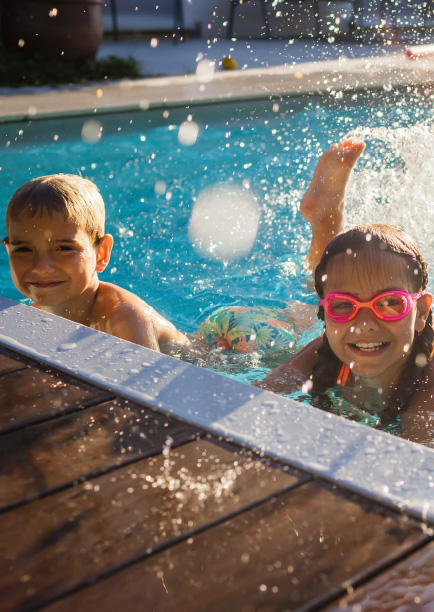
Maintenance and Regular Checks
Consistent maintenance and regular safety checks are crucial to keeping your pool area safe. Check the pool’s chemical levels frequently to ensure the water is safe for swimming. This includes monitoring pH levels, chlorine content, and alkalinity to prevent harmful bacteria and algae growth. Inspect all safety features, such as fencing, gates, covers, and alarms, to confirm they are functioning correctly. Ensuring that barriers are secure and alarms are operational can prevent accidental drownings, especially for small children and pets.
Scheduling regular professional inspections can help identify potential issues before they become serious problems. Professionals can provide a thorough check of your pool’s filtration system, plumbing, and structural integrity, which might be overlooked during routine checks. Addressing maintenance needs promptly ensures that your pool remains a safe and enjoyable space for your family. Regular cleaning, debris removal, and equipment maintenance are also vital in keeping the pool in optimal condition, allowing for a refreshing and worry-free swimming experience.
Conclusion
Creating a child-safe fibreglass pool area involves thoughtful planning and diligent maintenance. By focusing on key aspects like pool design, fencing, covers, alarms, and landscaping, you can create a secure and inviting environment for your family. Remember, safety is an ongoing commitment. Regular checks and updates will ensure that your pool remains a safe haven for years to come. Prioritise safety today, and enjoy the peace of mind that comes from knowing your loved ones can swim safely.


